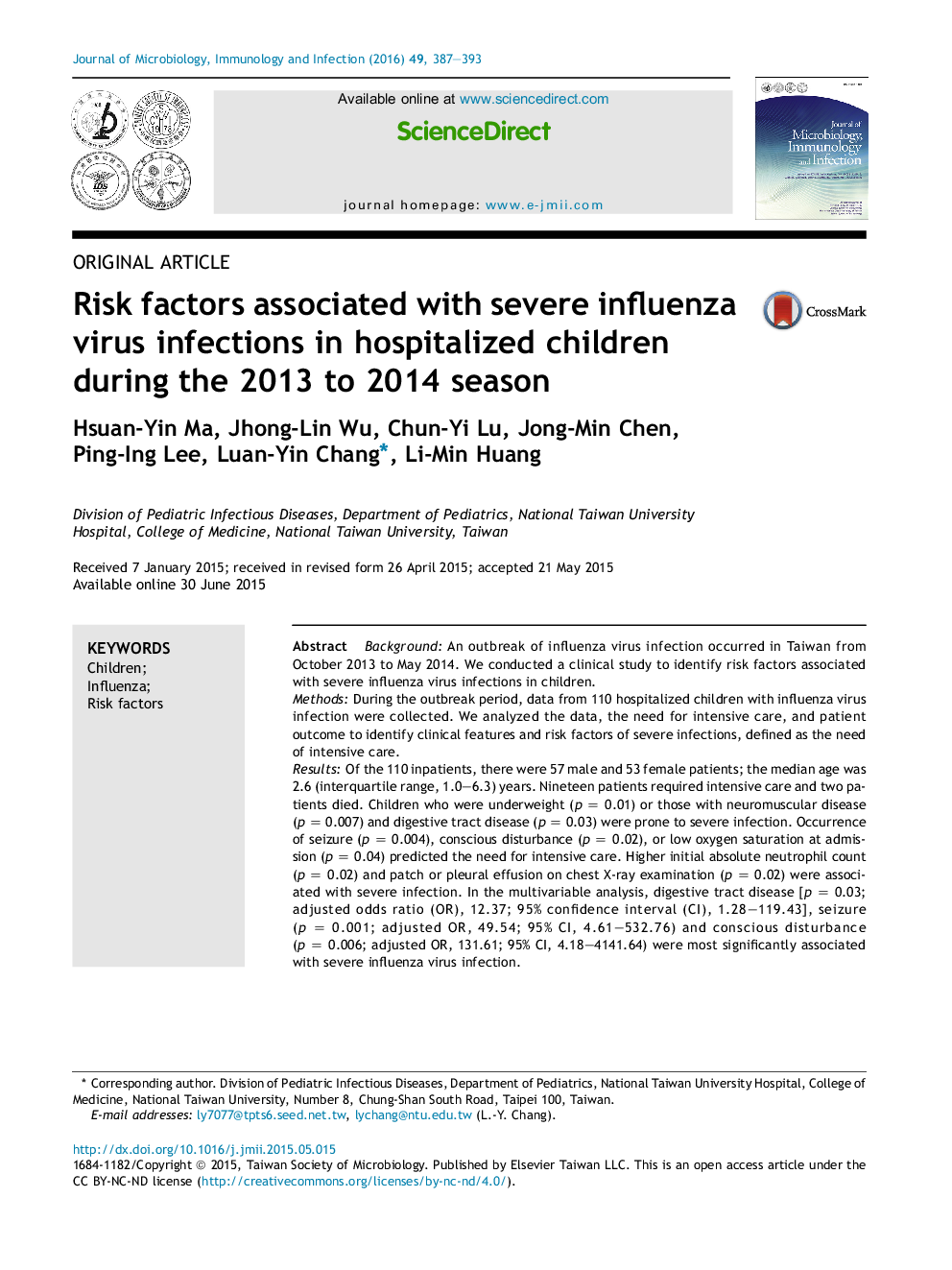| Article ID | Journal | Published Year | Pages | File Type |
|---|---|---|---|---|
| 3377703 | Journal of Microbiology, Immunology and Infection | 2016 | 7 Pages |
BackgroundAn outbreak of influenza virus infection occurred in Taiwan from October 2013 to May 2014. We conducted a clinical study to identify risk factors associated with severe influenza virus infections in children.MethodsDuring the outbreak period, data from 110 hospitalized children with influenza virus infection were collected. We analyzed the data, the need for intensive care, and patient outcome to identify clinical features and risk factors of severe infections, defined as the need of intensive care.ResultsOf the 110 inpatients, there were 57 male and 53 female patients; the median age was 2.6 (interquartile range, 1.0–6.3) years. Nineteen patients required intensive care and two patients died. Children who were underweight (p = 0.01) or those with neuromuscular disease (p = 0.007) and digestive tract disease (p = 0.03) were prone to severe infection. Occurrence of seizure (p = 0.004), conscious disturbance (p = 0.02), or low oxygen saturation at admission (p = 0.04) predicted the need for intensive care. Higher initial absolute neutrophil count (p = 0.02) and patch or pleural effusion on chest X-ray examination (p = 0.02) were associated with severe infection. In the multivariable analysis, digestive tract disease [p = 0.03; adjusted odds ratio (OR), 12.37; 95% confidence interval (CI), 1.28–119.43], seizure (p = 0.001; adjusted OR, 49.54; 95% CI, 4.61–532.76) and conscious disturbance (p = 0.006; adjusted OR, 131.61; 95% CI, 4.18–4141.64) were most significantly associated with severe influenza virus infection.ConclusionClose monitoring of the important risk factors including underlying digestive tract diseases, seizure attack and conscious disturbance were recommended during the influenza season.
